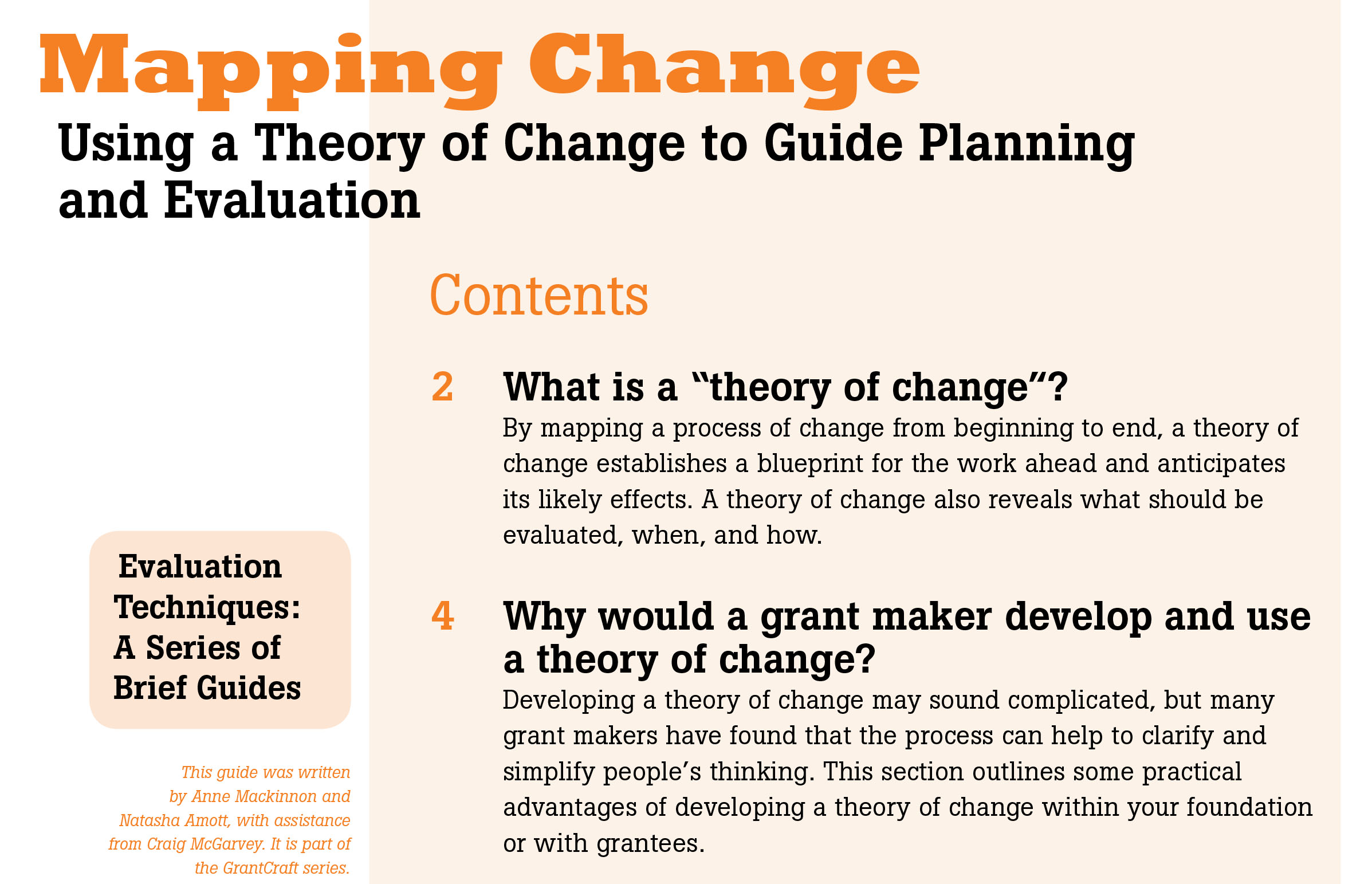Theory of Change: Framing Evaluation Questions
By making explicit the interrelated strands a complex initiative, a theory of change can draw out the questions a grantmaker will want to be asking over time, either through formal evaluations or more informal monitoring. For example, an actual theory of change for a national field-building initiative posits that long-term success will depend on expanding knowledge in a relatively new area of practice. Strategically, therefore, the grantmaker expects to commission a range of scholarly and applied research, then support activities to help people in the field absorb and aggregate what is learned.
The theory of change lists three overarching evaluation questions regarding that particular strand of the work:
- Is strategic research informing and improving policy interventions in regulatory, legalistic, and judicial settings?
- What progress is being made toward the development of frameworks, indicators of progress, and other knowledge tools?
- To what extent are professionalized policy organizations and grassroots groups sharing strategic research, and finding it helpful?
The theory of change also lists “milestones” or “indicators” to watch:
- Mechanisms to coordinate, integrate, and aggregate scholarly work in the field
- Evidence of tools to unify and advance the field
- Increase in research that cuts across different policy issues and disciplines
- Evidence of vehicles for transfer and dissemination of new knowledge to policy advocates and grassroots groups
- Evidence of greater reliance among policy advocates and grassroots groups on strategic research
- A nationally recognized and diverse set of public interest scholars begin to emerge and advance the field’s case in a variety of forums, disciplines and institutions
Takeaways are critical, bite-sized resources either excerpted from our guides or written by Candid Learning for Funders using the guide's research data or themes post-publication. Attribution is given if the takeaway is a quotation.
This takeaway was derived from Mapping Change.


